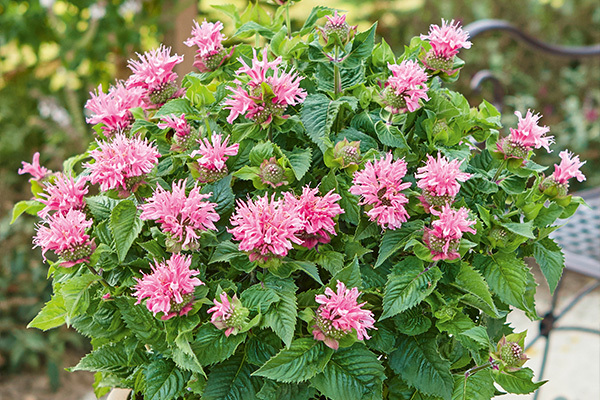
What We've Included
When to Plant | How to Plant | Where to Plant | When to Water | Deadheading | Overwintering | Propagating | Common Issues & How to Solve Them | When do they Flower?
When to Plant
Monarda seeds can be sown indoors in the early spring or outdoors in late spring. Monarda plants can also be planted out in the spring or autumn. This gives them plenty of time to establish, ready for their display come June to August.

How to Plant
Planting Loose Roots
Loose roots to beginners might sound intimidating but are in fact, incredibly easy to plant and budget friendly! Here’s how to do it:
- Soak roots in a bucket of water for 1-2 hours before planting.
- Dig a hole in the border that’s big enough to house the root system. If planting in pots, fill a large pot halfway with potting soil and then pop the roots in with the crown pointing upwards and the root system pointing to the floor.
- Plant in groups for a fuller display, usually in groups of 3, somewhere that gets plenty of sunlight.
- Ensure the crown is just below the soil unless the plant has some leaves, in which case leave them exposed with the rest of the root system under the soil.
- Water well once planted.
Planting Pot-Grown Plants/Modules
Our pot-grown plants are incredibly easy to plant and grow. Whether you’re growing them directly outside into the border or into a container, our pot-grown plants are a breeze from the moment they arrive.
- Dig a hole in the border that’s big enough to house the root system. If planting in pots, fill a large pot halfway with potting soil and then make a well in the middle. Do this until the top of the soil from the plant is just below the top of the pot.
- Wedge in the plant by adding soil to the gaps in the hole, firming down the surface to ensure it’s in place.
- Water well and you’re done!
Where to Plant
Plant Monarda in moist soil that’s well-drained, positioning them somewhere that reaches full sun or partial/dappled shade. These plants are compact in size, so can be grown in containers or along the flower bed. However, if you’re planting them in a patio pot, ensure that there’s enough air circulation - this will help you avoid them developing powdery mildew.

When to Water
Water your monardas regularly to prevent dry soil, especially during periods of drought. Every 7-10 days are recommended for them to thrive. This can help them grow regular flushes of beautiful blooms!
Deadheading
Deadhead spent flowers to help the plant produce regular flushes of flowers throughout their season.
Overwintering
Monardas, like many perennials, die back over winter. To help them survive, cut them back to the ground after they’ve finished flowering in mid-autumn. Cover the area with a thick layer of mulch to protect them from frosts.

Propagating
You can propagate monarda by division. This can be done in autumn or spring, preferably once they’ve finished flowering if you choose to divide them in autumn. The division helps to decongest large clumps that have gotten a bit too wild over a few years of growth. To divide bee balm, lift them out of the ground gently, trying not to damage the roots, and split clumps with a spade.
Another way of propagating monarda is to take basal cuttings for new shoots in spring.
Common issues & How to Solve Them
One of the main issues that Monarda faces is powdery mildew. This is caused by not having enough airflow around the base of the plants. Try not to plant them too close together to avoid this happening.
When does it Flower?
Bergamot plants often flower from June to August. This might depend, given which plant you decide to grow. You can check this on any of our product pages when browsing our website.

